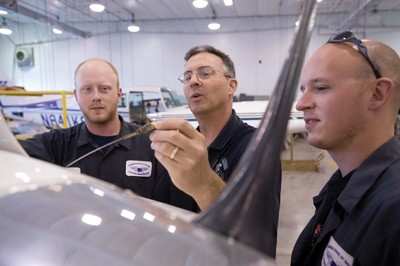Fri, Aug 28, 2015
Your Valid Pilot Certificate And Compliance With Medical Requirements Are Important, But Recent Experience May Also Determine If You Are Legal To Fly Or Carry Passengers
Airline and military pilots have a built-in system that keeps them current. By current we mean they meet certain flying requirements to be legal to act in their pilot-in-command (PIC) capacity and be able to carry passengers. With the general aviation pilots, it’s up to the individual pilot to maintain the requirements for recent experience.

The first one that usually comes to mind is the flight review. To act as PIC, the pilot must have received a flight review, or its approved equivalent, within the previous 24 calendar months. A flight review is just what the name implies; it’s a review. FAR 61.56 requires a minimum of one hour of ground training and one hour of flight training. Remember, if a pilot is not up-to-date with a flight review, that pilot is not allowed to fly as PIC with or without passengers, and is also not legal to be PIC flying to an airport to receive the flight review.
Okay, you have your pilot certificate and meet the medical requirements, and your flight review is current. This means you can just load your passenger and go, right? Not exactly; you must also have made 3 takeoffs and landings within the preceding 90 days to be legal to carry a passenger (this is 90 days, not 3 calendar months). In a nose-wheel equipped plane, these takeoffs and landings may be touch-and-goes, but in a tail-wheel plane, they must be to a full stop. If you are planning a night flight, you also have to meet the “3-in-90” rule for nighttime flying and these landings must also be to a full stop.
Remember, if you are out of date for a flight review, you may not pilot any aircraft as PIC, but if it’s only the “3-in-90” takeoffs and landings that needs updating, you can meet the requirement in solo flight and then load your passenger (if they are willing!). There is no regulation requiring the logging of all flight time, but be sure to log enough takeoffs and landings to be able to prove you are current for passenger carrying.
This is just a quick overview that applies to recreational airplane pilots. FAR 61 gets into more details about category/class and type-rated recent experience requirements.
(Group training may be applied to a flight review: Image from file)
More News
Aero Linx: Space Medicine Association (SMA) The Space Medicine Association of the Aerospace Medical Association is organized exclusively for charitable, educational, and scientific>[...]
Jamming Denotes emissions that do not mimic Global Navigation Satellite System (GNSS) signals (e.g., GPS and WAAS), but rather interfere with the civil receiver's ability to acquir>[...]
Aero Linx: Warbirds of America The EAA Warbirds of America, a division of the Experimental Aircraft Association in Oshkosh, Wisconsin, is a family of owners, pilots and enthusiasts>[...]
"From New York to Paris, this life-size replica of the Webb Telescope inspired communities around the world and, in doing so, invited friends and families to explore the cosmos tog>[...]
Hold-In-Lieu Of Procedure Turn A hold-in-lieu of procedure turn shall be established over a final or intermediate fix when an approach can be made from a properly aligned holding p>[...]
 ANN's Daily Aero-Linx (04.17.24)
ANN's Daily Aero-Linx (04.17.24) ANN's Daily Aero-Term (04.17.24): Jamming
ANN's Daily Aero-Term (04.17.24): Jamming ANN's Daily Aero-Linx (04.18.24)
ANN's Daily Aero-Linx (04.18.24) Aero-News: Quote of the Day (04.18.24)
Aero-News: Quote of the Day (04.18.24) ANN's Daily Aero-Term (04.18.24): Hold-In-Lieu Of Procedure Turn
ANN's Daily Aero-Term (04.18.24): Hold-In-Lieu Of Procedure Turn



